Updated on
Labrador, Canada: The last stronghold for giant native brook trout. The incomparable Minipi watershed is widely acknowledged as the world’s finest fishery for giant Brook Trout, with an astounding average size of right around 5 pounds. The Minipi is situated some 60 miles southeast of Goose Bay in Labrador’s remote wilderness. Accessible only by floatplane, the Minipi was first explored by fly rod legend Lee Wulff in the late 50’s. Lee recognized this as a one of a kind fishery producing a unique strain of thick bodied, beautifully conditioned brook trout.
The fertile, shallow lakes are veritable insect factories with prolific hatches of out-sized mayflies, caddis and stoneflies. This abundance of aquatic hatches means that Minipi brookies are almost always “looking up” and specimens up to 10 pounds have been taken on dry fly. Five of the current seven tippet class world records for Brook Trout have been taken in the Minipi system.
Book now, get a quote, or chat with us about Labrador fly fishing!
or

The Minipi Watershed Experience
Northern pike to 30 pounds are abundant and a unique strain landlocked arctic char up to 12 pounds are taken regularly as they stage for spawning in September. Fishing is restricted to fly fishing only for brook trout and char although spin or plug casting (single, barbless hook lures) is allowed on Minipi Lake. Because trophy brook trout are the main attraction, the incredible pike fishing is often overlooked; despite the fact Minipi Lake has also produced a current fly rod world record for pike, 25.5 pounds on 8-pound tippet. Catch and release is encouraged for brook trout, but anglers may take one trophy brook trout (6 pounds or better) per week for mounting.
The Fishing Program
River and lake fishing is available at all of the Minipi camps. The lakes in the Minipi system are relatively shallow in most areas, allowing sunlight penetration to the bottom. This accounts for amazing insect life making this fishery a dry fly angler’s dream! Anglers are transported to fishing areas in aluminum boats and freighter canoes with 9.9 horsepower motors. Minipi Lake, which is a larger body of water (30-miles long), also has deep-vee aluminum hull boats with 30 hp 4 stroke engines to reduce run times up the lake. You fish two anglers per boat with an experienced, licensed guide, either casting from the boat, from shore, or while wading, depending on the area you fish.
Prime Fishing Areas
A network of boats and canoes are stationed at various known hotspots better accessed by walking. Inlets and outlets are often productive areas as are “narrows” in the lake where there is good current movement. July is the peak mayfly emergence, although good dry fly fishing usually starts around the 20th of June and we have witnessed fishable hatches of giant “drakes” (Hexagenia) and caddis well into August.
Seasonal Patterns
The “growing season” is short and these brookies take advantage and feed voraciously from ice-out (usually 1st week in June) until spawning time in the fall. These fish can pack on an additional 15 – 20% in body weight over the summer! As such, August usually produces the biggest fish (4 of the 5 current records). By the second 2 weeks in August, these big brookies begin staging at the inlets and outlets in preparation for their spawning run. The landlocked arctic char are caught early in the season, but during the warmth of summer, they seek refuge in the deeper parts of the lake. However, they begin staging for their spawning at the inlets and outlets in early September, the time that anglers have their best chances for trophy char.
Fly Patterns & Tackle

Most anglers new to Labrador are amazed by the average size of both mayflies and caddis, which are often imitated on hooks as large as size 2. Most of the dry flies you’ll fish are in the 6 – 12 size range. The Wulff patterns are the most frequently fished dry fly patterns with the Grey Wulff being the most popular. But variations such as the Grizzly, Minonipi and the Royal Wulffs have their followers as well. Big, extended body “Drake” imitations, outsized caddis (Elk Hair & Goddard Caddis for example, and large stoneflies (like the Stimulator in orange or yellow), and a few Atlantic salmon Bombers round out a good dry fly selection.
Other large surface patterns, including deer hair mice, Dahlberg diver types and bass bugs (even cork bodied bass poppers!) are effective on big Minipi brookies, as well as pike. During times between hatches, wet flies, nymphs and streamers are deadly as well with favorite patterns including Muddler Minnows (original and marabou versions), Mickey Finns, Clousers, Zonkers, and Wooly Buggers. For nymphs, large Bitch Creek, Prince Nymphs, and Hare’s Ears are essential.
The Camps
Anne Marie Lodge

Anne Marie is the oldest and first opened in 1964. Perhaps because of its history and intimacy, Anne Marie has enjoyed a loyal following of repeat clients year after year. After 7 daunting years of construction in the Labrador bush, in 2011, the Cooper’s hosted their first guests at new luxury Ann Marie Lake Lodge, which replaced the aging Anne Marie cabin that had hosted fisherman for a half a century.
The spectacular new Ann Marie Lodge features full ensuite bedrooms, spacious and comfortable common and dining areas, and large windows affording spectacular views of Ann Marie Lake. The camp accommodates a maximum of 10 anglers.
Minipi Lake Lodge
Minipi Lake Lodge, which first opened in 1988, is a modern multilevel structure featuring a 40 foot high, prow-shaved window wall overlooking Minipi Lake. The lodge is just 1/4 mile from the outlet into the Minipi River. The River stretch in the gorge behind the lodge is a “nursery” during most of the season and offers fast action for smaller brookies averaging 2 pounds. Late in the season when the big spawners enter the system, the average size increases. A short walk down to the gorge after dinner is a popular way to finish a great day on Minipi. The lodge accommodates a maximum of 10 anglers.
Flyout Destinations
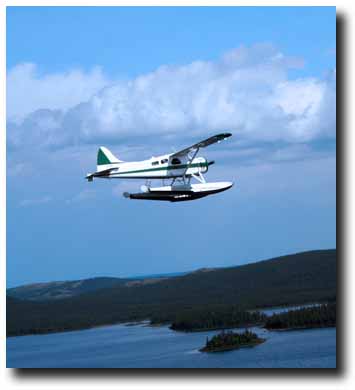
Minonipi Lake Lodge is currently used as just a daily flyout destination. Minonipi generally produces larger average sized trout than Ann Marie or Minipi and has 2 of the systems world records including a 10-pound brookie taken June 29, 1987. Minonipi also has better numbers of landlocked char.
Little Minipi Lodge is also used only for daily fly outs. Besides inlet/outlets and vast lake areas, Little Minipi has a 1 ¼ mile section of river that holds very large brookies throughout the summer. Fish of over 9 pounds have been taken from the river. The outlet right in front of the camp is also one of the best staging areas for arctic char for the September run of landlocked arctic char.
Daily Schedule & Experience

The daily schedule includes 4 meals. Typically, anglers head out after breakfast, usually not earlier than 9:00 am (Minipi trout are late risers), and stay out for the day, having a shore lunch at noon. Usually the best mayfly hatches occur around 2:00 in the afternoon. Guests return to the lodge for a 6:00 pm dinner, and head back out for the evening fishing. Summer days are long in Labrador (fishable light until 10:00 pm in late-June/early July), and your guides will stay late if you wish. Catching an evening spinner fall on the Minipi is nothing short of a magical experience! A final late evening meal is available when you return to camp for the night.
In September combination fishing/hunting trips may be arranged on special request. The region offers Canada Geese, ptarmigan, ruffed grouse, ducks, and caribou.
Minipi Camps 2025 – 2026 Rates
Rates are per person based on 7 nights accommodations and 6 1/2 days guided fishing with two people sharing a room and a guide daily. Please contact us for current rates and availability.
| Camp | Capacity | Rate (USD) |
|---|---|---|
| Anne Marie Lake Lodge | 10 Rods | $6,595 + Taxes |
| Minipi Lake Lodge | 10 Rods | $5,595 + Taxes |
Rates are per person in USD$ and subject to change. There is at present a 15% Harmonized Services Tax added to fishing packages.
Booking at Minipi Camps is easy:
Tap a button below to start the conversation. Our services are free.

Included & Not Included
Included: Airport reception and transfers in Goose Bay; chartered helicopter or float plane service from Goose Bay to lodge; accommodations; guided fishing; meals at the lodge; fishing license.
Not Included: Airfare to Goose Bay; accommodations if required in Goose Bay; tackle; liquor; soft drinks and gratuities, tax; optional fly outs for June & July trips.
Getting to Minipi Camps
In most cases, guests will overnight in either Halifax or St. Johns and fly to Goose Bay the following morning, and take the float plane into camp that afternoon. Anne Marie typically transfers on Fridays; Minipi Lake Lodge transfers on Thursdays. Please contact us for detailed travel arrangements and recommendations.

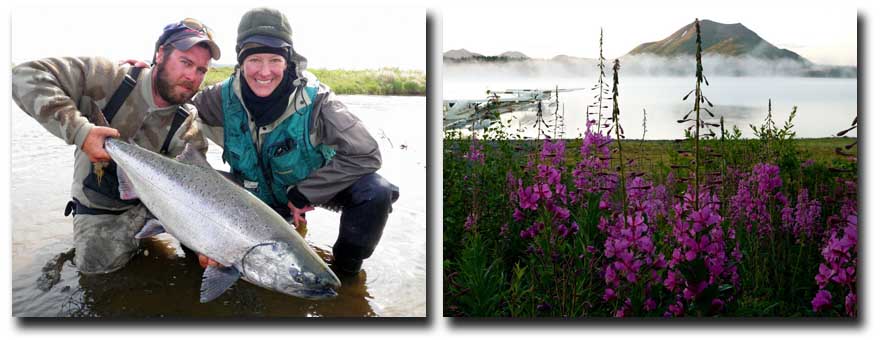
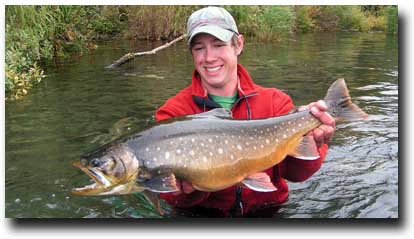



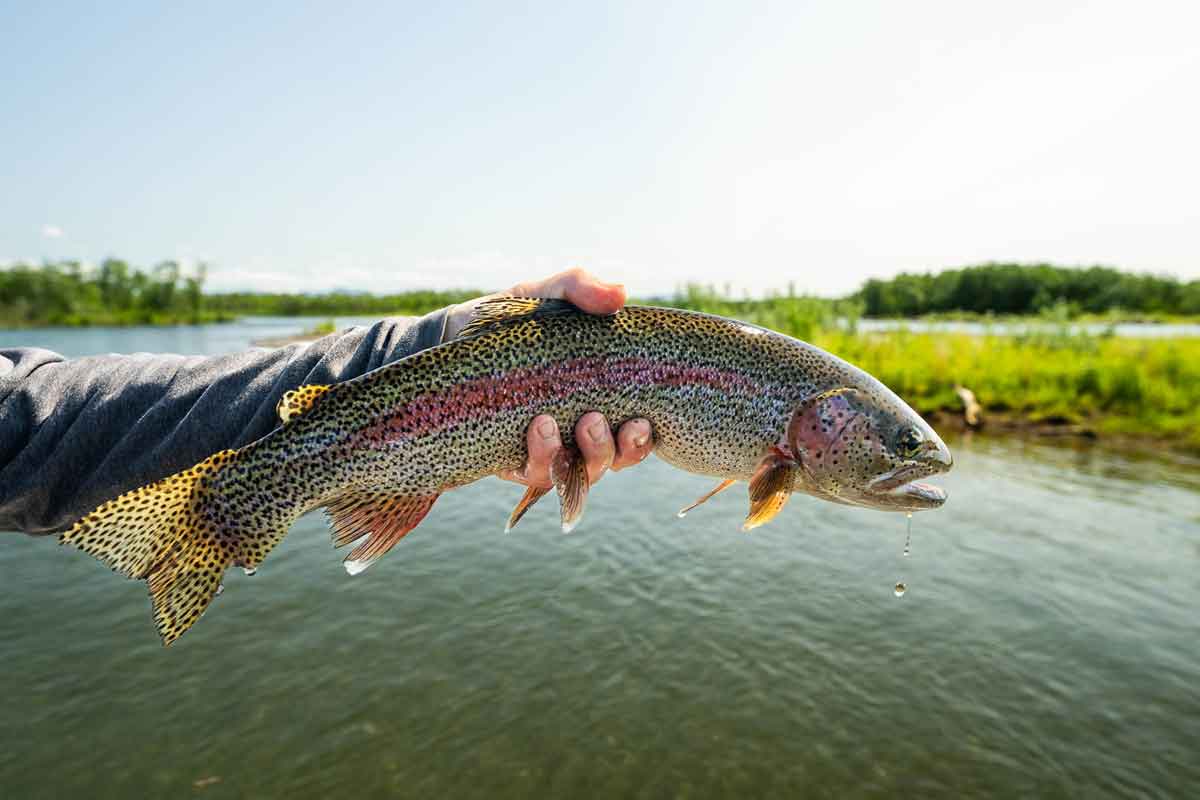


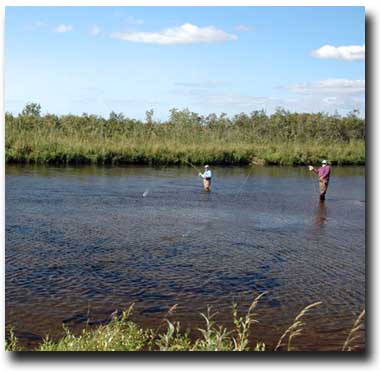
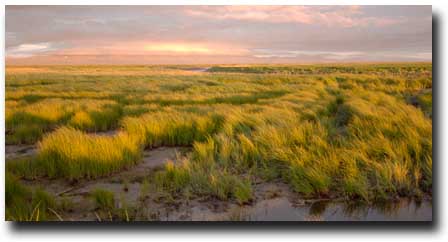


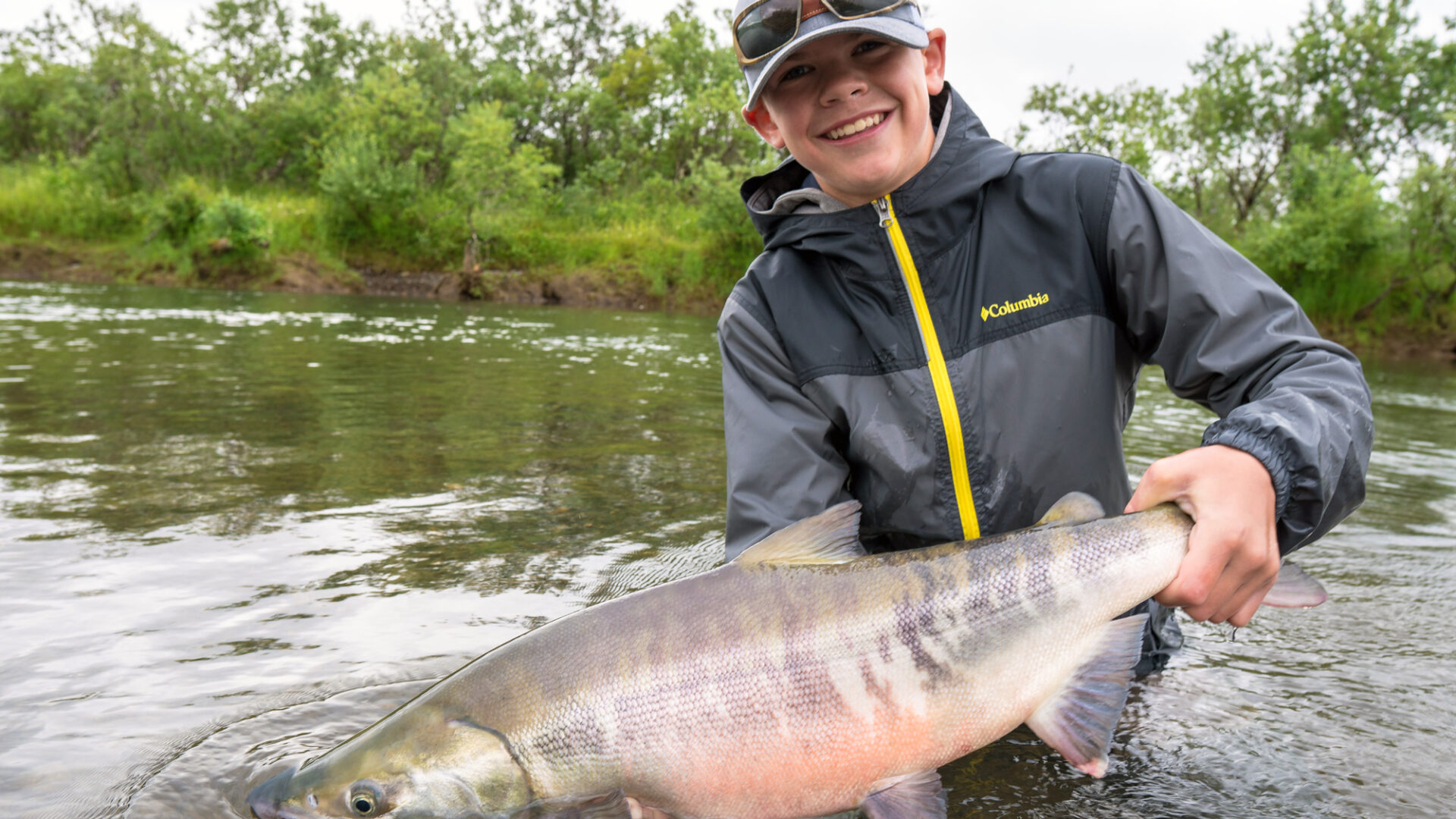


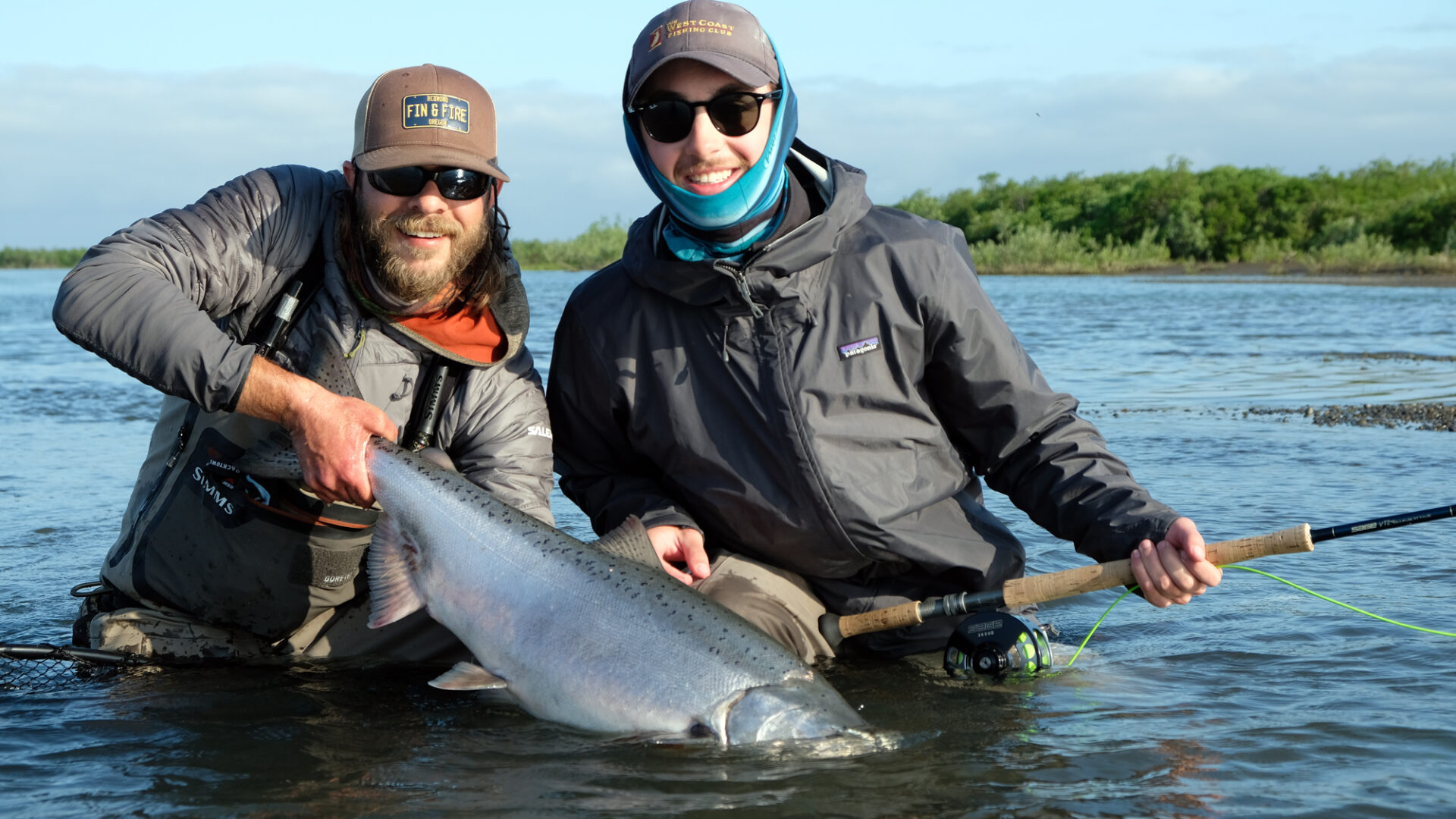
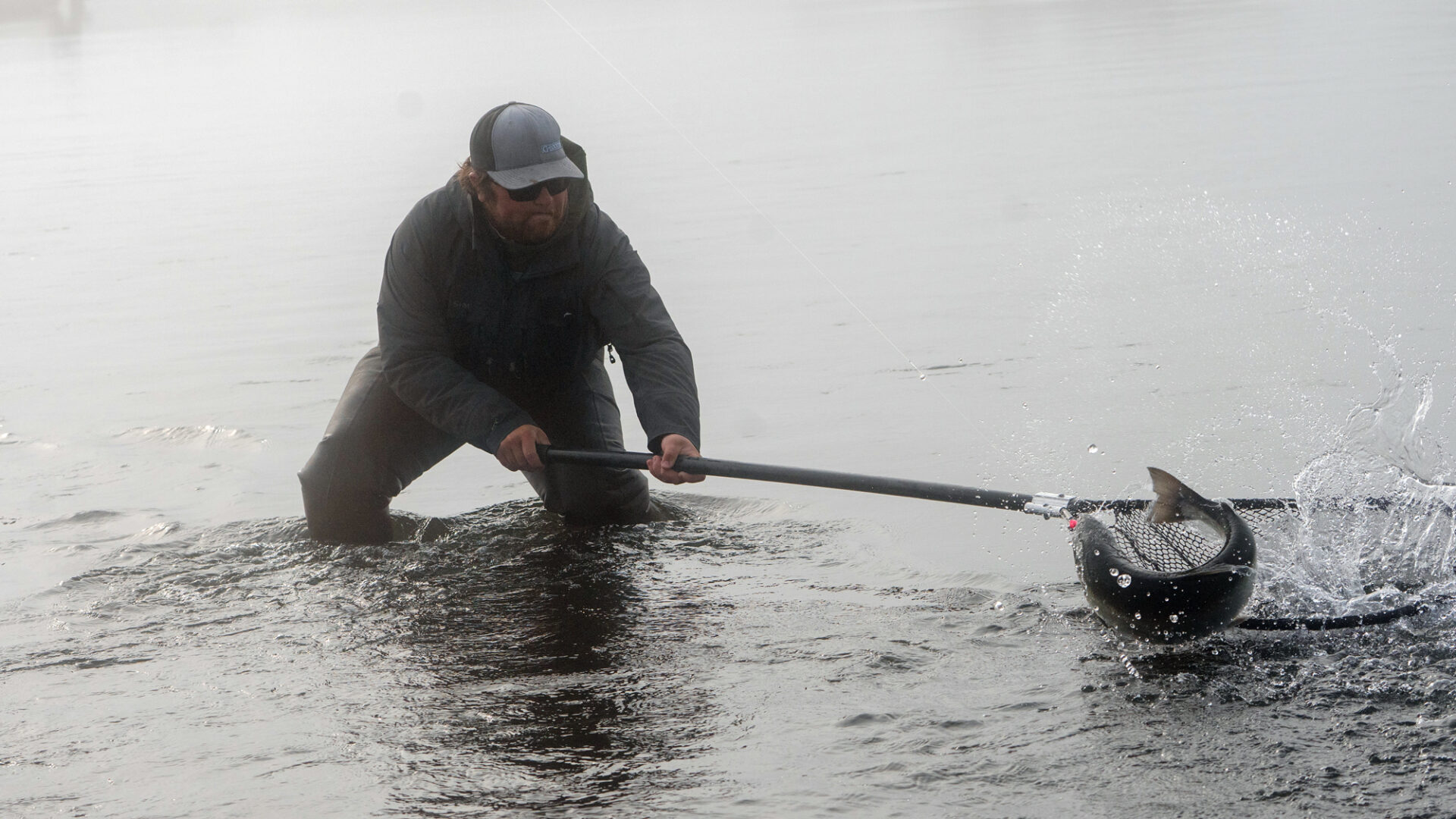



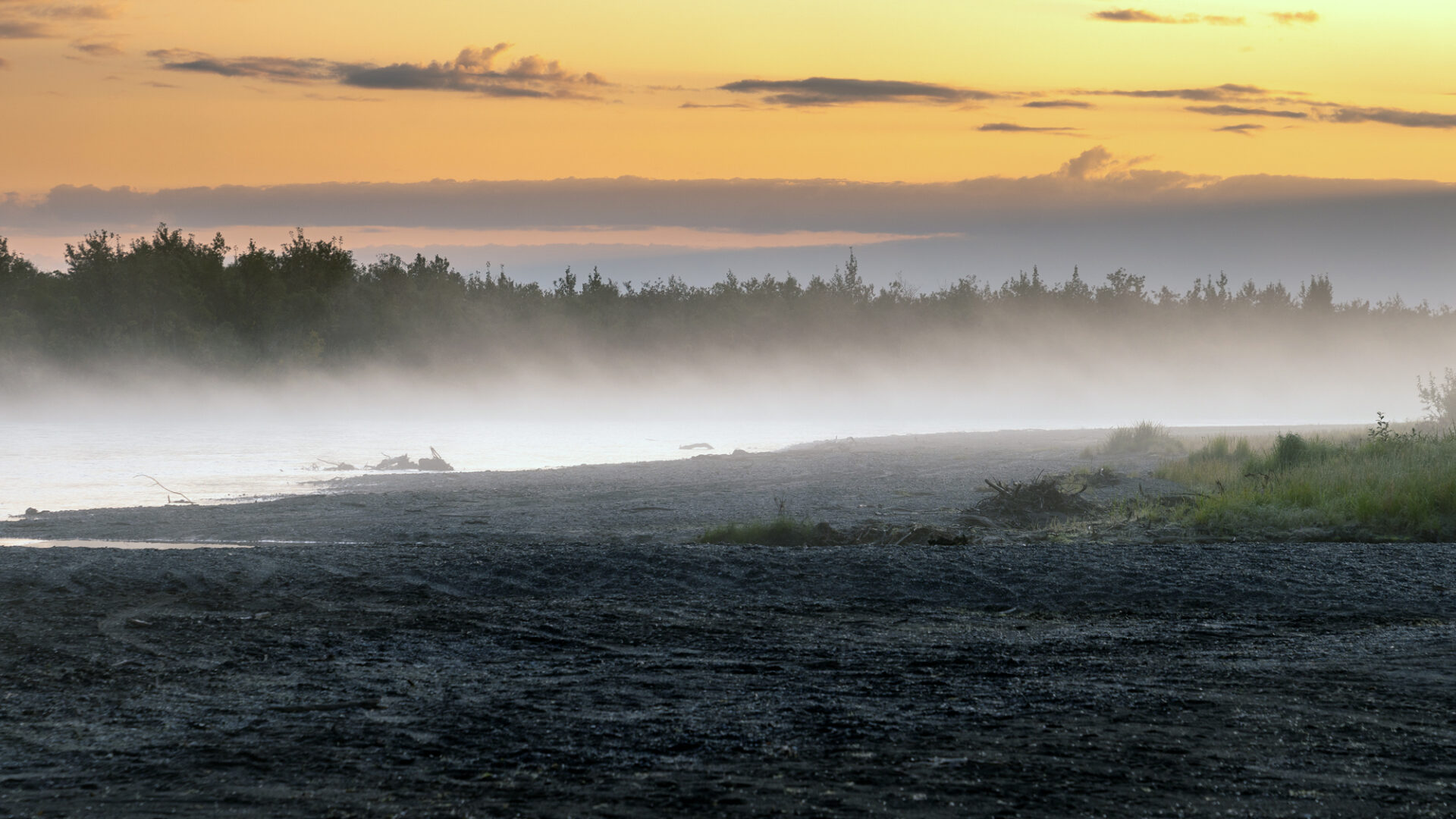

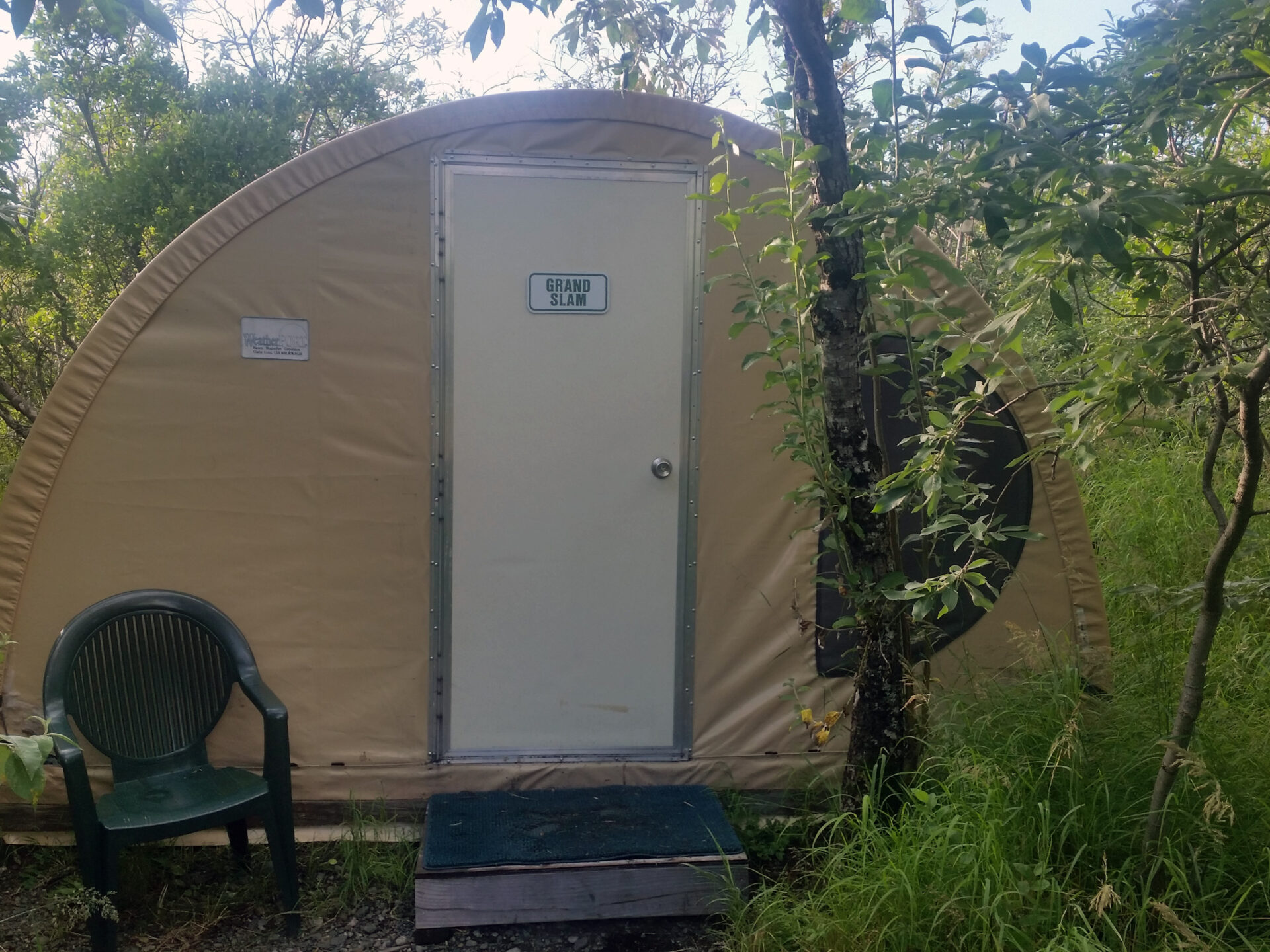
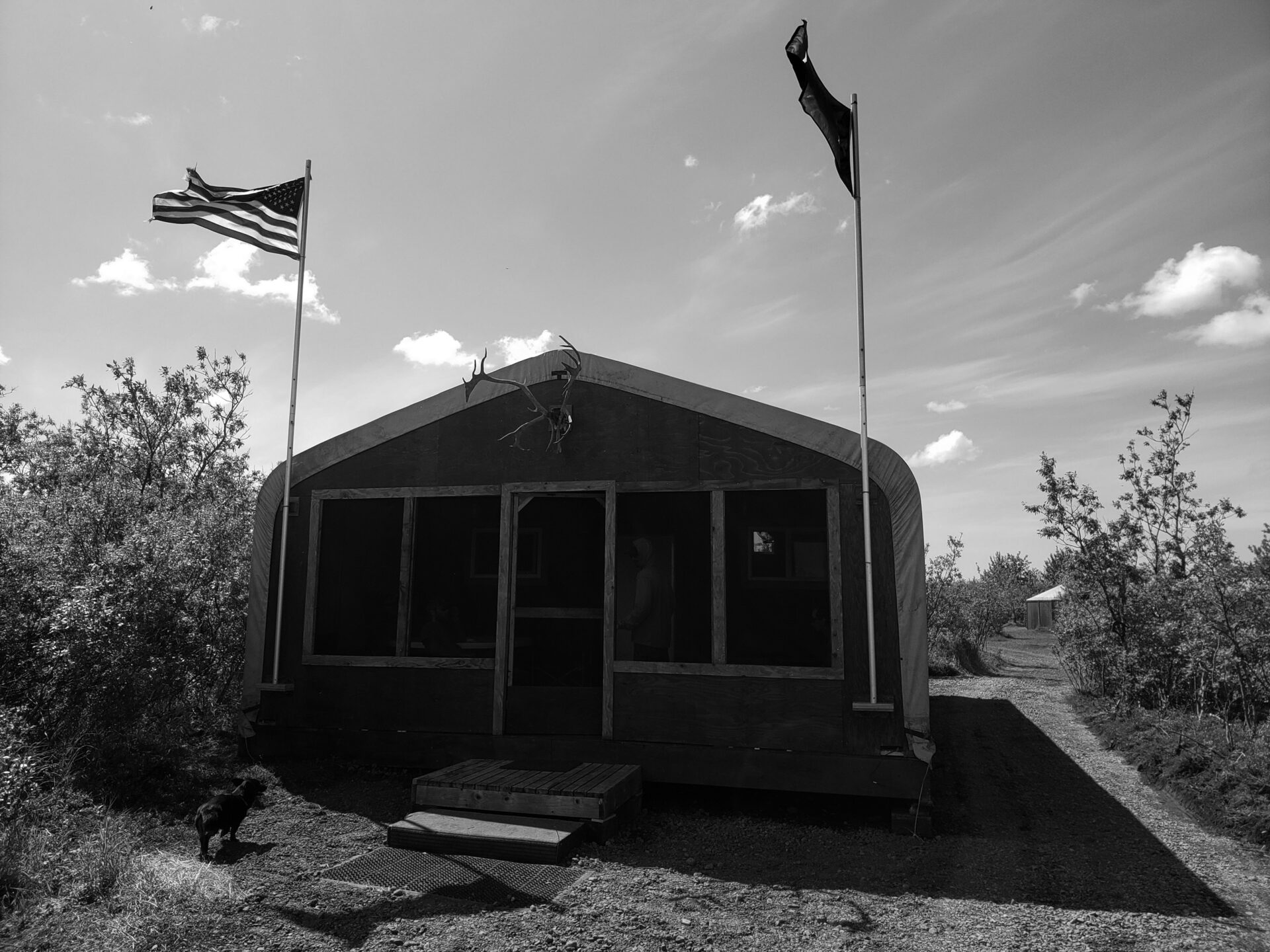
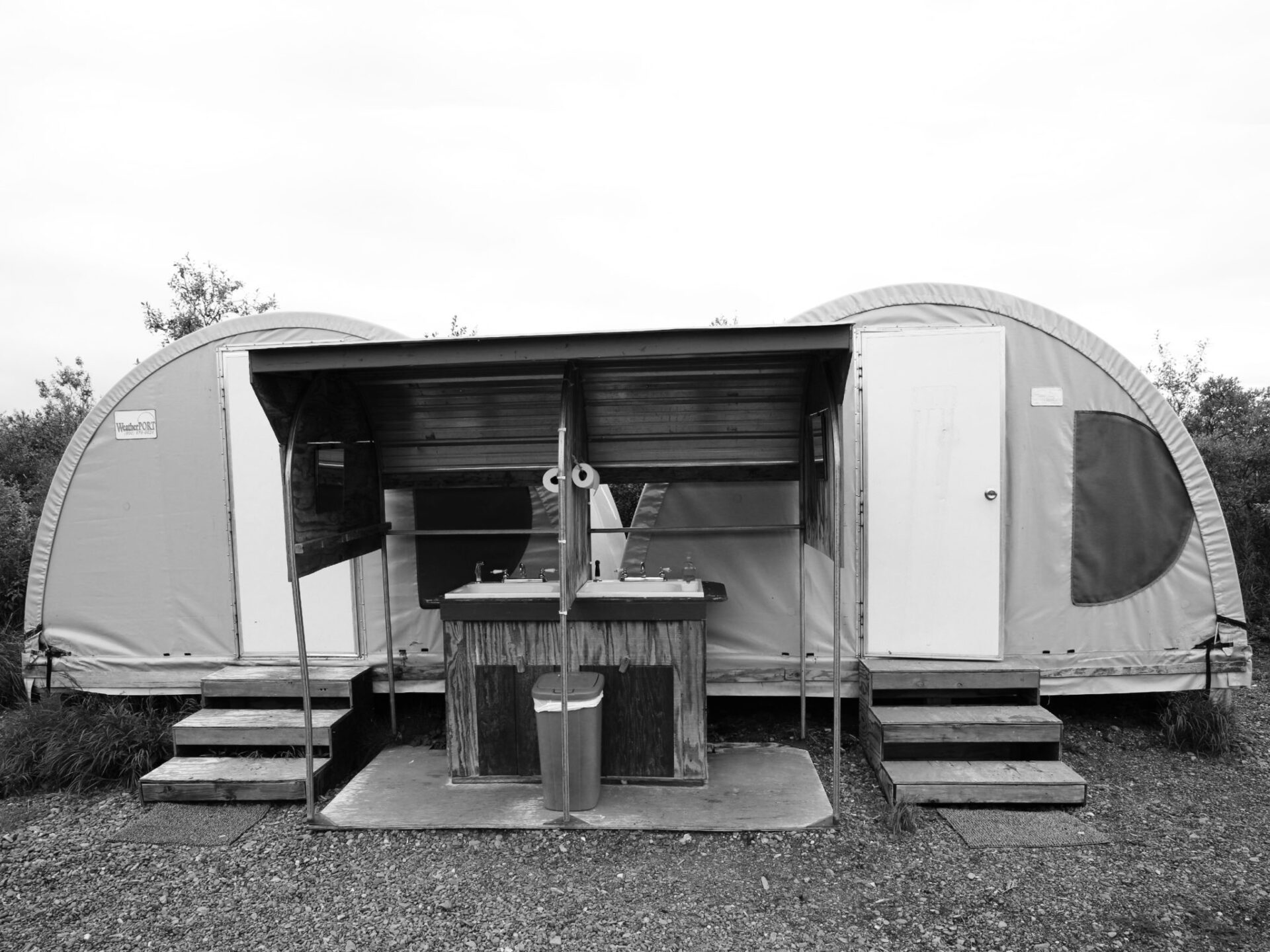
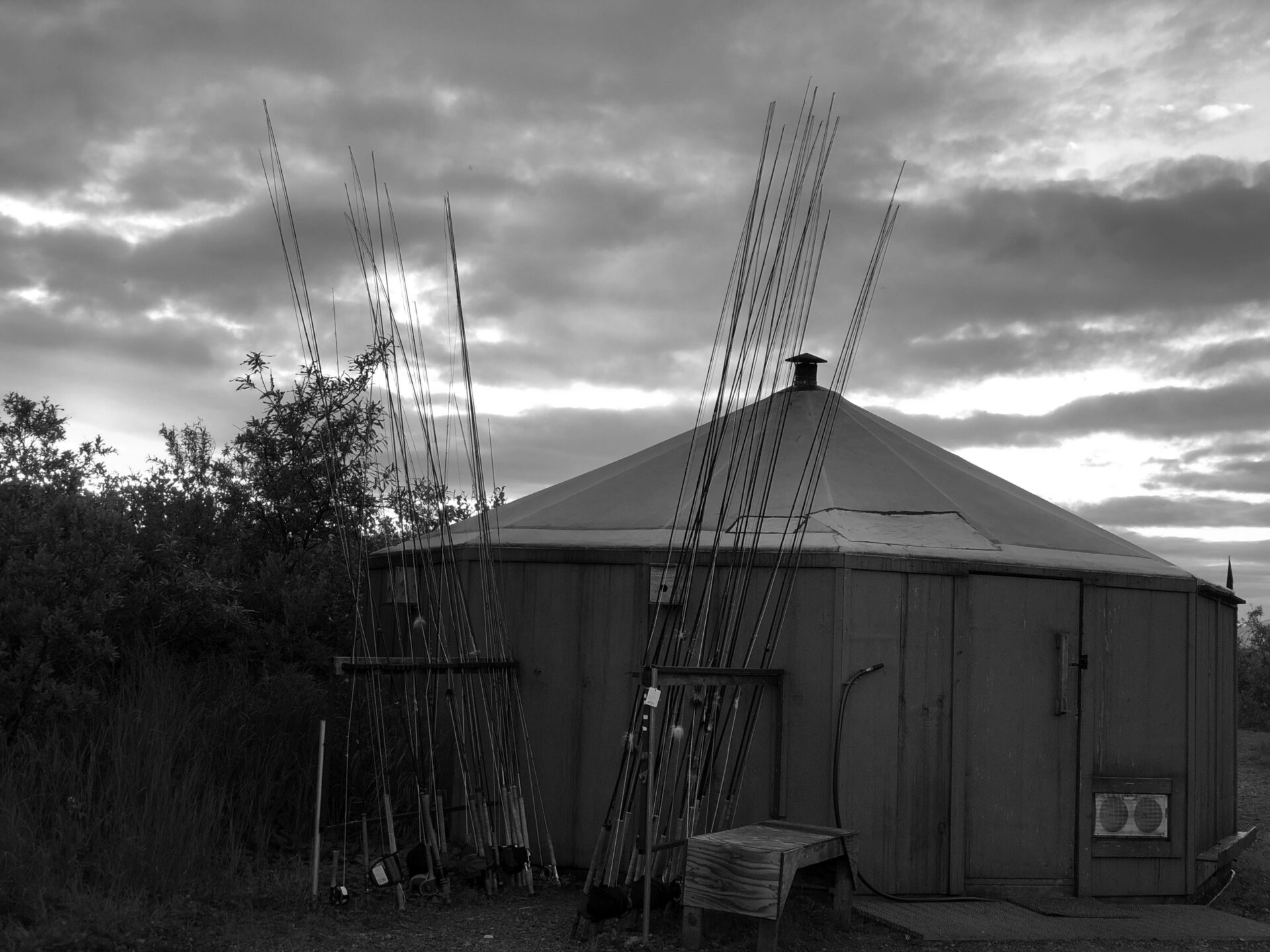



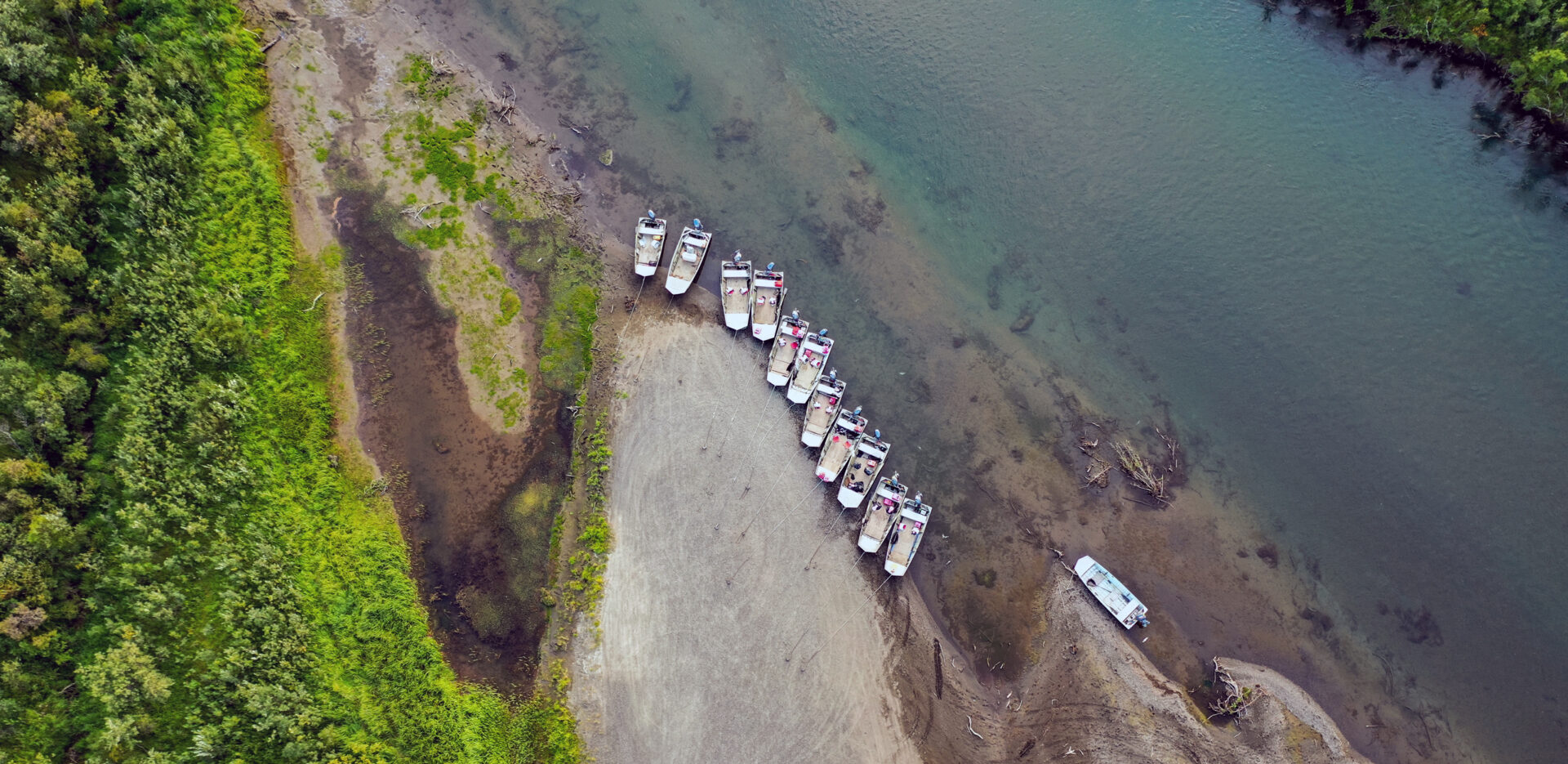




 Dave Duncan & Sons operates two base camps on the Kanektok; Upper Base Camp and Lower Base Camp. Central to both camps are the spacious kitchen and dining facilities housed in large, free-standing community area tents, which every evening become the center of activity. These contain a complete propane kitchen, dining tables, and a fly-tying bench. Sleeping facilities at both Upper and Lower Base Camps are sturdy, double occupancy 10 X 12 Weather Port System tents with cots and carpeting. The meals served are excellent and come with homemade bread, fresh salads, and large cuts of quality meats. The base camps even have a hot shower facility as well as heated drying tents for waders and wet clothing.
Dave Duncan & Sons operates two base camps on the Kanektok; Upper Base Camp and Lower Base Camp. Central to both camps are the spacious kitchen and dining facilities housed in large, free-standing community area tents, which every evening become the center of activity. These contain a complete propane kitchen, dining tables, and a fly-tying bench. Sleeping facilities at both Upper and Lower Base Camps are sturdy, double occupancy 10 X 12 Weather Port System tents with cots and carpeting. The meals served are excellent and come with homemade bread, fresh salads, and large cuts of quality meats. The base camps even have a hot shower facility as well as heated drying tents for waders and wet clothing. While both camps offer opportunities for all above species, anglers preferring to concentrate on salmon fishing usually choose Lower Base Camp to catch dime-bright salmon fresh from the salt. Fresh run fish are in prime condition and readily take the fly. While kings usually require wet fly, sinking line presentations, other salmon species (silvers in particular) can be teased into surface strikes with patterns like the now famous ‘Wog (Pink Pollywog).
While both camps offer opportunities for all above species, anglers preferring to concentrate on salmon fishing usually choose Lower Base Camp to catch dime-bright salmon fresh from the salt. Fresh run fish are in prime condition and readily take the fly. While kings usually require wet fly, sinking line presentations, other salmon species (silvers in particular) can be teased into surface strikes with patterns like the now famous ‘Wog (Pink Pollywog). These Alaska adventures are complete wilderness experiences, with no facilities of any kind found along the route. Dave Duncan & Sons has spent years researching and developing specialized camps and boats for comfort and convenience. Only the best inflatable rafts, 16′ Avon Pro’s are used. Each raft features rowing racks, floorboards to stand on, and anchoring capabilities that allow guests to fish any drift in the river. Most of Alaska’s big game and bird species are common in these areas and during the trip it will be possible to see many in their natural habitat.
These Alaska adventures are complete wilderness experiences, with no facilities of any kind found along the route. Dave Duncan & Sons has spent years researching and developing specialized camps and boats for comfort and convenience. Only the best inflatable rafts, 16′ Avon Pro’s are used. Each raft features rowing racks, floorboards to stand on, and anchoring capabilities that allow guests to fish any drift in the river. Most of Alaska’s big game and bird species are common in these areas and during the trip it will be possible to see many in their natural habitat.
 When it’s time to load the plane and return, the person going home is a different person than the one that came. He has a deeper appreciation and respect for the fishing experience and Alaska’s vast wilderness. Float trips are limited to eight guests, with one guide and two guests per boat.
When it’s time to load the plane and return, the person going home is a different person than the one that came. He has a deeper appreciation and respect for the fishing experience and Alaska’s vast wilderness. Float trips are limited to eight guests, with one guide and two guests per boat. Timing
Timing
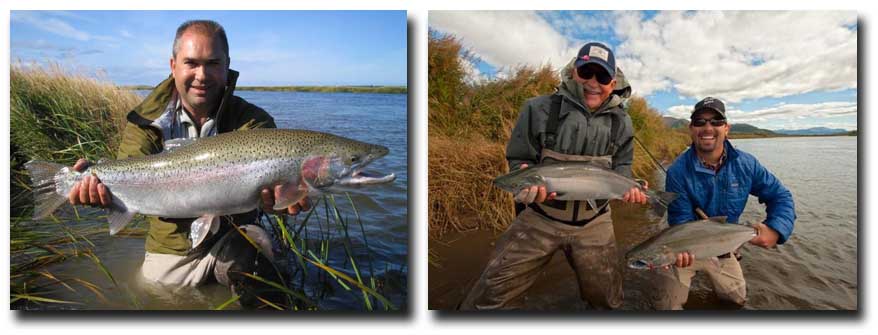
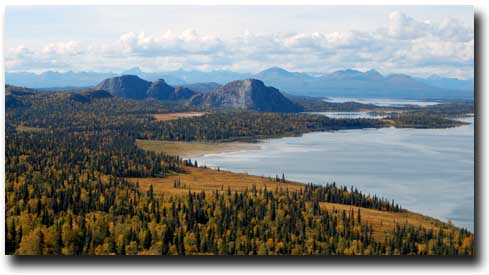
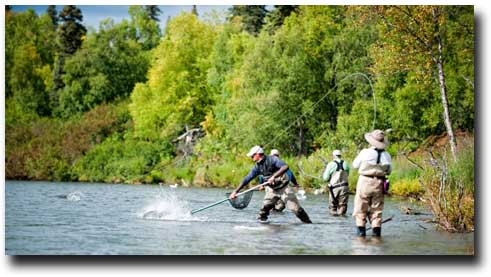 When everything is fishing well, there are literally too many fishing options. Imagine trying to decide whether to fish for 25 pound pike on the surface, fresh sea lice covered salmon near the coast, hiking small creeks for Arctic Char in the mountain streams, Rainbows and Dollies on the Nushagak, Agulapak, Kvichak, etc, or a mixed bag of Grayling, Lake Trout, and Rainbows on Royal Coachman’s home water. That’s the dilemma guests face each day.
When everything is fishing well, there are literally too many fishing options. Imagine trying to decide whether to fish for 25 pound pike on the surface, fresh sea lice covered salmon near the coast, hiking small creeks for Arctic Char in the mountain streams, Rainbows and Dollies on the Nushagak, Agulapak, Kvichak, etc, or a mixed bag of Grayling, Lake Trout, and Rainbows on Royal Coachman’s home water. That’s the dilemma guests face each day. The main lodge houses the kitchen, dining room and lounge, library corner, one guest room with a private bath, and massage room. Comfortable and cozy, this is where you will plan each following days excursions. You and your guides will sit around the fire, and decide what type of fishing you would like to do, and plan the details of tomorrows outing. There is no pre-scheduled fishing program.
The main lodge houses the kitchen, dining room and lounge, library corner, one guest room with a private bath, and massage room. Comfortable and cozy, this is where you will plan each following days excursions. You and your guides will sit around the fire, and decide what type of fishing you would like to do, and plan the details of tomorrows outing. There is no pre-scheduled fishing program.

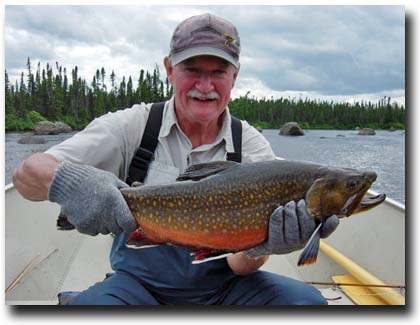
 In addition to the abundant Brook Trout, Crooks Lake and Eagle River offer chances for big northern pike, occasionally topping the 20 pound mark. Pike are taken trolling spoons and plugs, as well as large, saltwater size streamers. But in quiet, weedy backwaters or “steadies”, you can catch them casting flies or plugs around rocks and other cover. They love mice patterns, but will also explode on fly rod big poppers. Bring a 9 weight and your bluefish poppers!
In addition to the abundant Brook Trout, Crooks Lake and Eagle River offer chances for big northern pike, occasionally topping the 20 pound mark. Pike are taken trolling spoons and plugs, as well as large, saltwater size streamers. But in quiet, weedy backwaters or “steadies”, you can catch them casting flies or plugs around rocks and other cover. They love mice patterns, but will also explode on fly rod big poppers. Bring a 9 weight and your bluefish poppers!

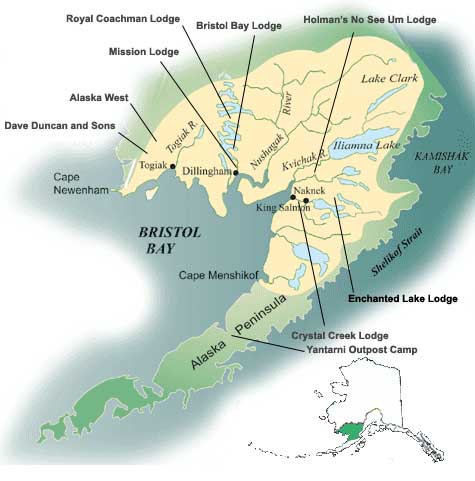
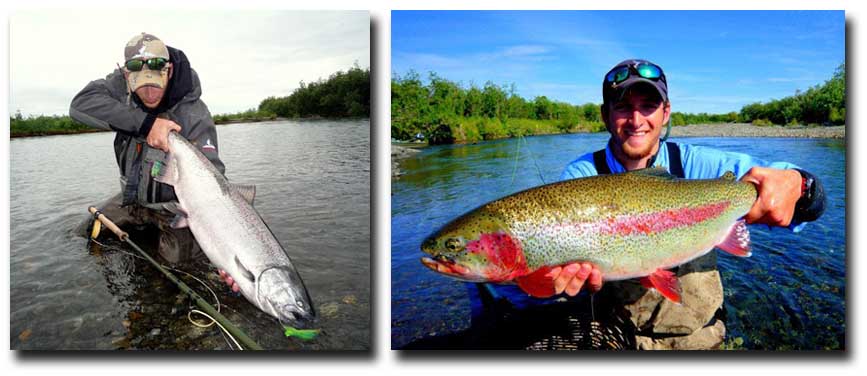

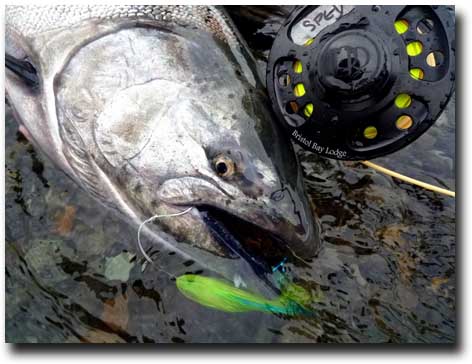
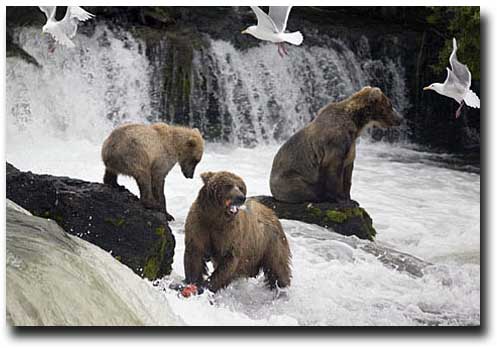
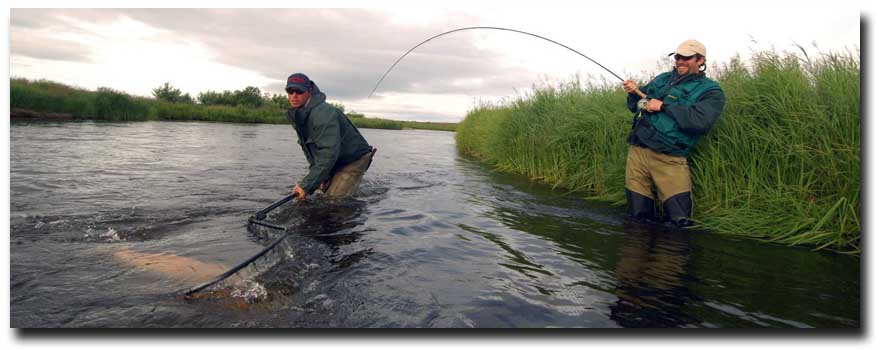

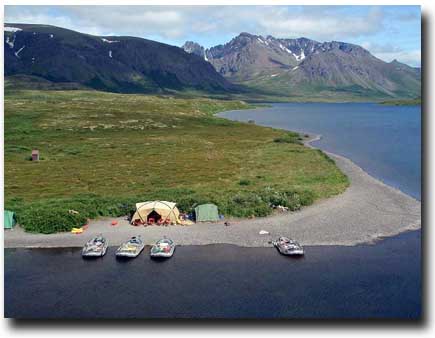



 There is also a wader-drying room, full bar, game room, chef’s kitchen and dining room overlooking the Naknek River. There are also two disconnected double-occupancy cabins with private baths. While the lodge can comfortably accommodate 18 guests, they normally take a maximum of 14 guests at a time (private groups of up to 16 can book the entire lodge by special request).
There is also a wader-drying room, full bar, game room, chef’s kitchen and dining room overlooking the Naknek River. There are also two disconnected double-occupancy cabins with private baths. While the lodge can comfortably accommodate 18 guests, they normally take a maximum of 14 guests at a time (private groups of up to 16 can book the entire lodge by special request).



 Mission Lodge’s strategic location in the heart of the Bristol Bay region of southwest Alaska, places it within easy flying distance to the finest fishing waters in the state to fish for sockeyes, chums, kings, pinks or silver salmon, in addition to rainbow trout, Dolly Varden, arctic char, grayling and pike. If you’re looking for the greatest variety, we suggest the late June/July time period, when you can catch sockeyes, chums, pinks (even years) and king salmon in addition to the fresh water species. If you’re interested in silver and pink salmon (in addition to the fresh water species), we recommend August and the first two weeks of September. If your primary interest is rainbow trout and char, we recommend early June, the middle of the season (mid-July through August) and the month of September.
Mission Lodge’s strategic location in the heart of the Bristol Bay region of southwest Alaska, places it within easy flying distance to the finest fishing waters in the state to fish for sockeyes, chums, kings, pinks or silver salmon, in addition to rainbow trout, Dolly Varden, arctic char, grayling and pike. If you’re looking for the greatest variety, we suggest the late June/July time period, when you can catch sockeyes, chums, pinks (even years) and king salmon in addition to the fresh water species. If you’re interested in silver and pink salmon (in addition to the fresh water species), we recommend August and the first two weeks of September. If your primary interest is rainbow trout and char, we recommend early June, the middle of the season (mid-July through August) and the month of September.





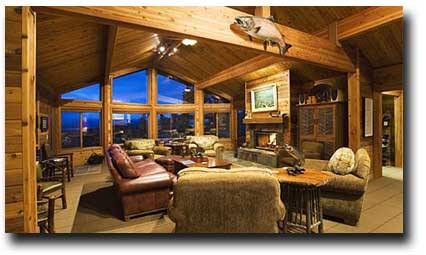 Like many Alaska fly-out fishing lodges, Enchanted Lake Lodge lays in dramatic contrast to the rugged landscape in which it was built. Enchanted Lake Lodge provides the luxury and service one would expect from any world-class resort.
Like many Alaska fly-out fishing lodges, Enchanted Lake Lodge lays in dramatic contrast to the rugged landscape in which it was built. Enchanted Lake Lodge provides the luxury and service one would expect from any world-class resort. An experienced, professional staff is always on call to cater to each guests expectations and preferences. Enchanted Lake Lodge makes guest’s comfort, fishing and safety their highest priorities.
An experienced, professional staff is always on call to cater to each guests expectations and preferences. Enchanted Lake Lodge makes guest’s comfort, fishing and safety their highest priorities.